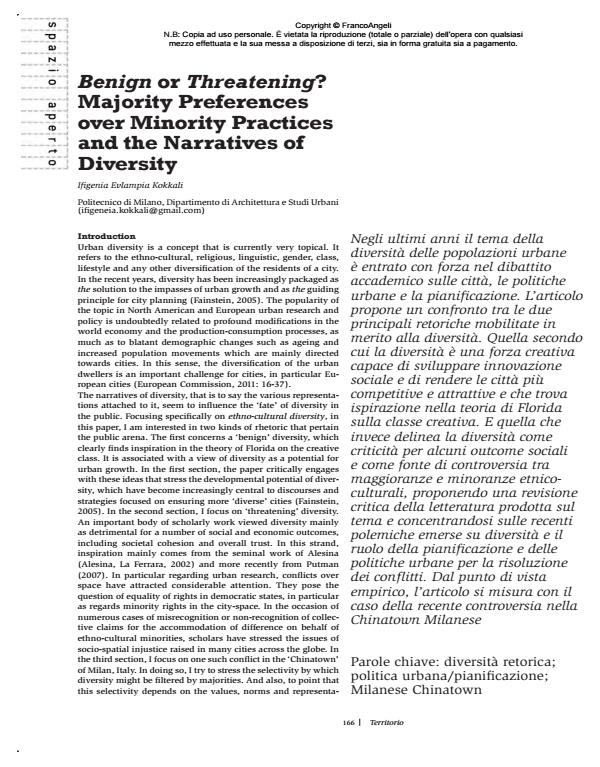Benign or Threatening? Majority Preferences over Minority Practices and the Narratives of Diversity
Titolo Rivista TERRITORIO
Autori/Curatori Ifigenia Evlampia Kokkali
Anno di pubblicazione 2016 Fascicolo 2016/78
Lingua Inglese Numero pagine 11 P. 166-176 Dimensione file 1956 KB
DOI 10.3280/TR2016-078020
Il DOI è il codice a barre della proprietà intellettuale: per saperne di più
clicca qui
Qui sotto puoi vedere in anteprima la prima pagina di questo articolo.
Se questo articolo ti interessa, lo puoi acquistare (e scaricare in formato pdf) seguendo le facili indicazioni per acquistare il download credit. Acquista Download Credits per scaricare questo Articolo in formato PDF

FrancoAngeli è membro della Publishers International Linking Association, Inc (PILA)associazione indipendente e non profit per facilitare (attraverso i servizi tecnologici implementati da CrossRef.org) l’accesso degli studiosi ai contenuti digitali nelle pubblicazioni professionali e scientifiche
Negli ultimi anni il tema della diversità delle popolazioni urbane è entrato con forza nel dibattito accademico sulle città, le politiche urbane e la pianificazione. L’articolo propone un confronto tra le due principali retoriche mobilitate in merito alla diversità. Quella secondo cui la diversità è una forza creativa capace di sviluppare innovazione sociale e di rendere le città più competitive e attrattive e che trova ispirazione nella teoria di Florida sulla classe creativa. E quella che invece delinea la diversità come criticità per alcuni outcome sociali e come fonte di controversia tra maggioranze e minoranze etnicoculturali, proponendo una revisione critica della letteratura prodotta sul tema e concentrandosi sulle recenti polemiche emerse su diversità e il ruolo della pianificazione e delle politiche urbane per la risoluzione dei conflitti. Dal punto di vista empirico, l’articolo si misura con il caso della recente controversia nella Chinatown Milanese
Parole chiave:Diversità retorica; politica urbana/pianificazione; Milanese Chinatown
Ifigenia Evlampia Kokkali, Benign or Threatening? Majority Preferences over Minority Practices and the Narratives of Diversity in "TERRITORIO" 78/2016, pp 166-176, DOI: 10.3280/TR2016-078020